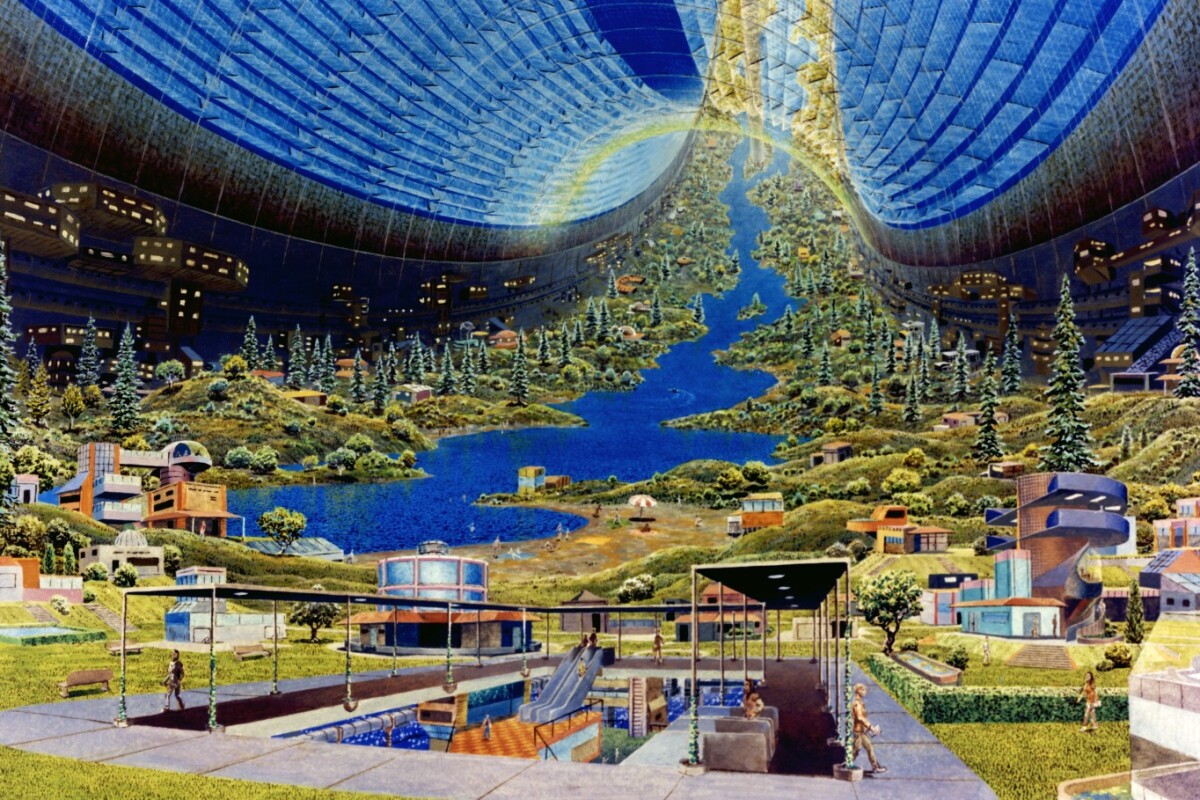Those of a certain age and a certain bent can't fail to look at this beautiful depiction of the interior of a space station without a sense of nostalgia. Because, though Don Davis (in this case) depicts a presumably far-future vision of human space colonies, the art itself is very much of its time: the 1970s.
It's easy to mistake as being conceptual art for speculative fiction, but in fact this image, and the others here, come about as a result of successive summer studies from the collective brains of NASA, Princeton and Stanford. Here's some of what they came up with.
The Stanford torus

Proposed at the 1975 Summer Study at Stanford University, the Stanford torus is one take on the popular ring-shaped (or toroidal) space station, envisaged to permanently house up to 150,000-odd people in outer space.
Key to the concept is the rotation of the ring. Rotate at the correct speed (which depends on its size) and you'll have just the centrifugal force needed to simulate Earth's gravity, though only on the inside of the torus' outward-facing surface.
If this sounds fanciful, the study went so far as to propose that a torus could be built from moon-matter flung into space with an electromagnetic catapult. So perfectly feasible, in other words.
The cylinder space station

Cylindrical space stations like the Lewis One and the O'Neill colony also rely on the principle of generating simulated gravity via rotation.
On the plus side, you can make one a hell of lot smaller than you can a toroidal space station, but the concept is more complicated: the rotation makes it tough to keep its solar panels (which are separate from the rotating cylinder) angled toward the Sun.
The solution proposed by physicist Gerard K. O'Neill (or perhaps one of his students) is ingenious: place one cylinder inside another so any gyroscopic effects cancel.
If that isn't enough ingenuity for one space station, O'Neill and co also planned to simulate night and day with adjustable mirrors.
The Bernal sphere

A sphere, you say? Look carefully: the habitable part is towards the middle — and don't be fooled by the colorful reflection in the mirror.
At this point you've already spotted the theme: Again, being a round shape (the roundest, in fact), the station is able to rotate to simulate gravity, though the force would drop away the farther you go from the sphere's equator. Like a toroidal space station, then, this would achieve a valley-like habitable space.
Though a sphere may sound less efficient in terms of the amount of stuff you'd need to build it, the shape is optimal when it comes to "minor considerations" like atmospheric pressure and radiation-protection.
Though a feature of the 1970s studies, the Bernal sphere was original proposed in the 1920s by John Desmond Bernal.
Check out the gallery for more pictures.
Source: The NASA Commons on Flickr



















